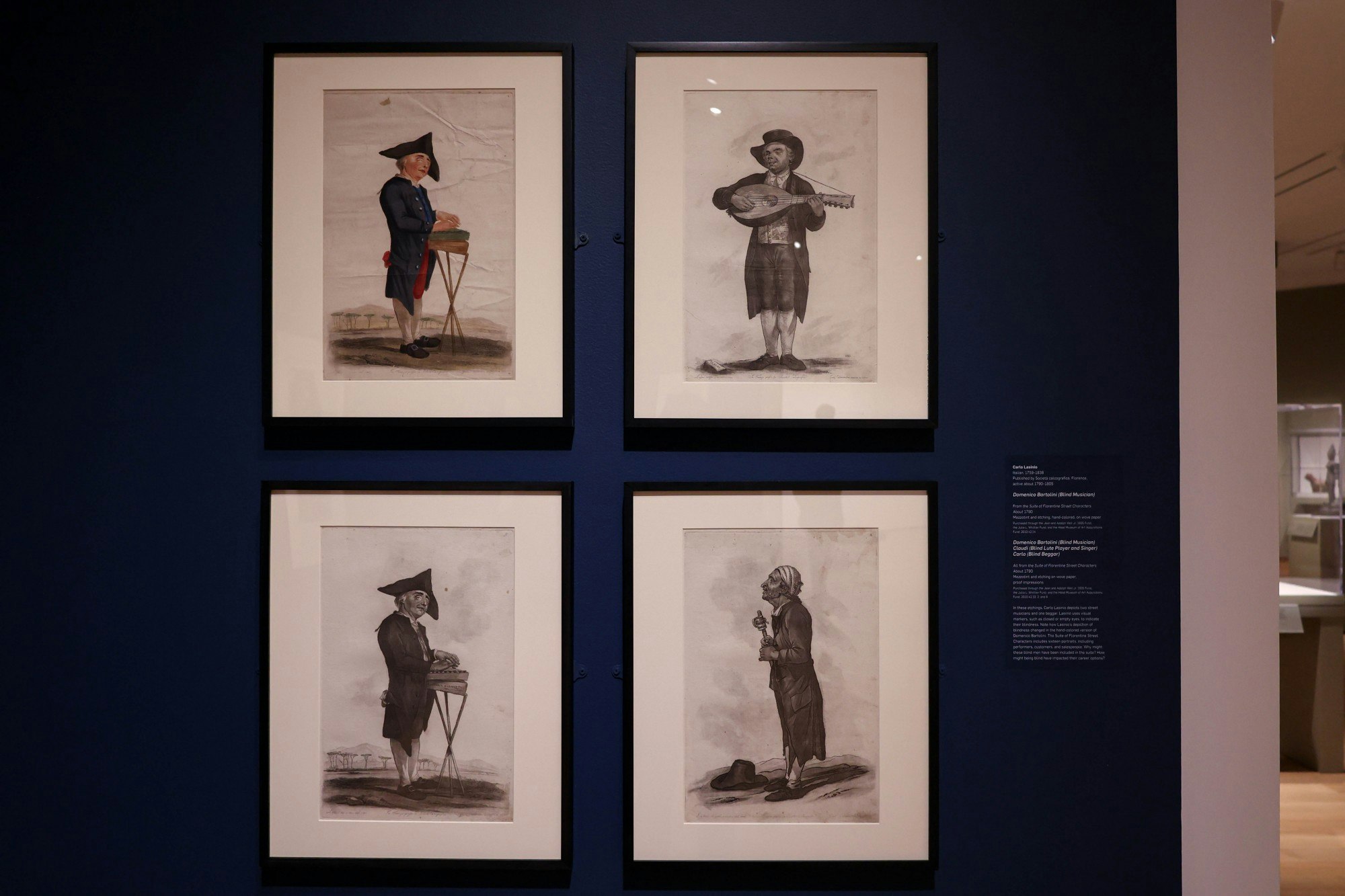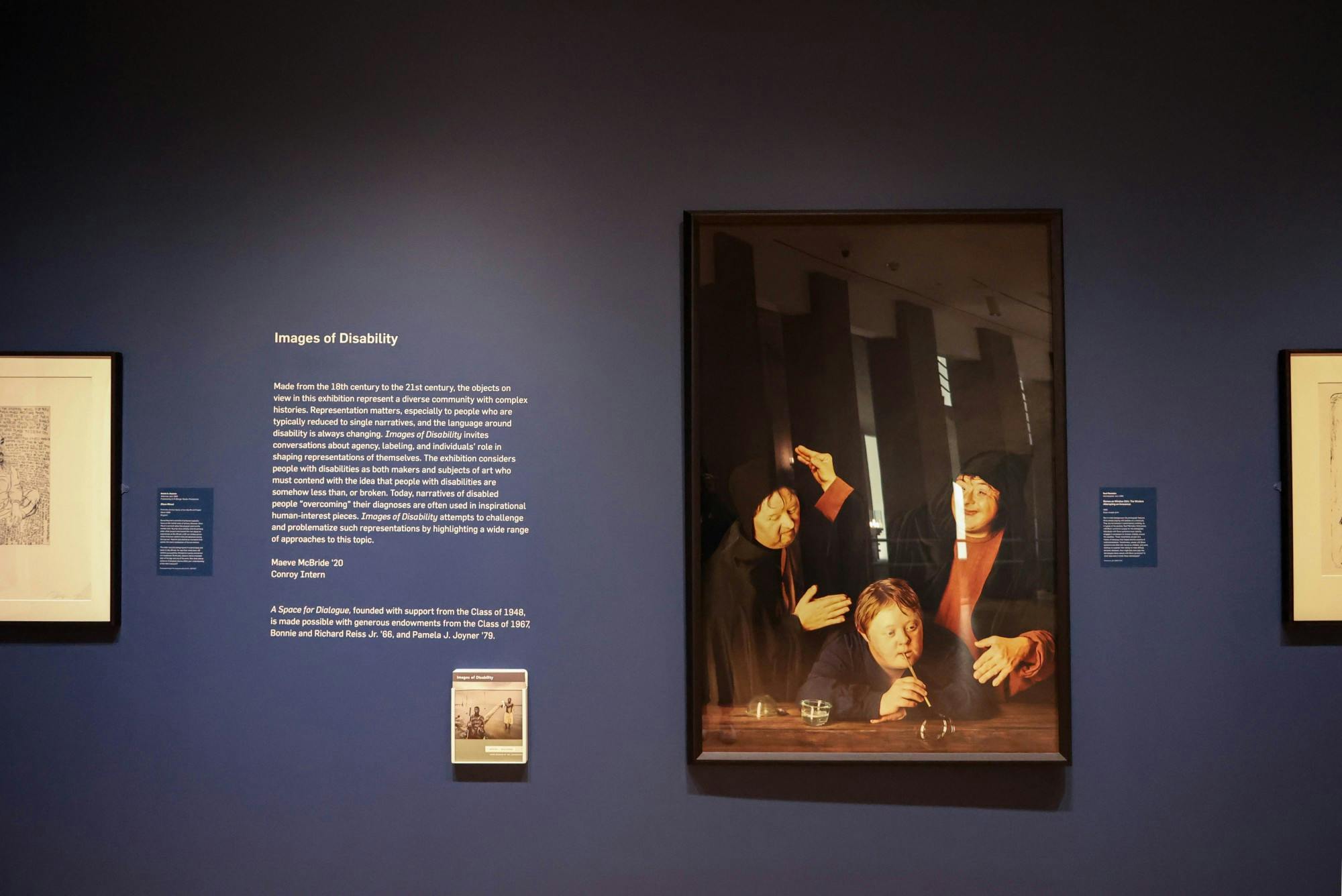On Oct. 20, the Hood Museum of Art hosted recent graduate and former Conroy Intern, Maeve McBride ’20 for the latest installation of the museum’s “Virtual Space for Dialogue” series. During the talk, McBride discussed her curated collection, “Images of Disability,” which examines how artists with and without disabilities have approached the subject. Featuring pieces from as far back as 1790, the aim of McBride’s collection is to promote conversations about agency, labeling and representation, according to the event’s promotional materials.
McBride, who graduated from Dartmouth with a major in anthropology and a minor in religion, is currently a first-year law student at the George Washington Law School and said during her talk that she hopes to one day advocate for children with disabilities in public schools. McBride added that she created her exhibit, titled “Images of Disability,” to spark questions in observers’ minds about how they view disabled people and how disabled people view the world. Specifically, she wanted to initiate thoughts about how Dartmouth students do or do not see disabled people on campus.
As an undergraduate, McBride co-founded Access Dartmouth, an organization devoted to accessibility, advocacy and activism on campus. As a mentorship organization, Access Dartmouth helps ease the transition to Dartmouth for incoming students with disabilities. The organization’s goal, according to its website, is to create a more supportive environment on campus by forming a strong community of disabled students and enacting structural change.
“I was working with Access Dartmouth at the time, and we were really starting to create a campus conversation about disability, and when I realized that the Hood had never done an exhibition on disability, I thought it would be really interesting to look at the collection of works at the Hood that touch on the issue,” McBride said.

During the “Space for Dialogue Gallery Talk” webinar, McBride gave a presentation in which she discussed her curation process and the motivations behind her focus on disability. She also presented a few of the pieces on display in the exhibit. After McBride’s presentation, associate curator of education at the Hood Neely McNulty led a question and answer session.
Amelia Kahl ’01, curator of academic programming at the Hood, described McBride as very creative, even when the pandemic took hold part-way through her internship and continued through her senior year.
“[She is] thoughtful and steadfast, with the strength of her convictions to really have an impact on student life here at Dartmouth,” Kahl said.
McNulty noted that McBride was personally invested in the theme of her exhibit and determined to see it through.
“When interns have the opportunity to curate an exhibition, often students choose a theme or focus for their exhibition that is somehow personally meaningful to them,” McNulty said. “And in the case of Maeve, thinking about disability, and working on this theme and how it is represented in the Hood’s collection was really something she knew she wanted to work on from the first day she started working with us at the Hood.”
Intern exhibits are typically exclusively curated from the about 65,000 pieces that the Hood already owns. However, very few of those pieces touch directly on the idea of disability.
“The struggle with curating this [exhibit] was that the disability community is incredibly varied,” McBride said. “There are so many types of disabilities that it’s hard to talk about the disability community in a broad swath. There are so many different people with so many varied experiences that I worked hard to try to walk that line between [being] inclusive of everyone and also creating a focused exhibit without speaking for people.”
The “Images of Disability” collection contains pieces that depict disability and also pieces by artists that have disabilities themselves.
“I wanted as much as possible to include perspectives of disabled people and not just perspectives from able-bodied people looking at disabled people,” said McBride.
McBride said her favorite piece and the focal point of the pamphlet for “Images of Disability” is "Kwabla and Yaovi Ahotor," a piece by South African artist Mikhael Subotzky depicting two blind men on a beach with an ominous storm looming in the background. McBride noted that it is a fairly small image in person, but draws attention because it seems as though both men are looking directly into the camera. She said the piece also offers a look into how people see or don’t see the blind.
“I primarily chose it because it was so visually impactful,” said McBride.
The exhibit also features a sketch by José Clemente Orozco called "Study of Hand for Modern Migration of the Spirit for the Epic of American Civilization." Orozco, who lost his left hand in a factory accident while making fireworks, made many such sketches in preparation for painting the "Epic of American Civilization" in Baker Library While it is unclear whether Orozco’s accident influenced his focus on hands, according to McBride the piece offers a look at how disabled artists see the object of their disability.
“One of the main messages of the show is that disability is not monolithic,” Kahl said. “There are many different ways that artists are viewing themselves, and the art they produce is talking about or sharing different ideas of disability so that multiplicity of disability is a really important theme of the show.”

McBride’s first time working in a museum setting was during her time as Conroy Intern. She said she had always loved going to museums, but had never taken an art history course.
McBride had experience writing about cultural objects while completing her anthropology major, yet she was inexperienced when it came to writing about art.
“Anthropology is all about the objects that we live with, and an art museum is a very different context,” McBride said. “It was really fun and also challenging sometimes to sort of shift my mindset.”
McBride noted that art is a way for her to question the world around her.
“Walking into a museum gives me an opportunity to think deeply about what the artist is thinking, why they're doing what they're doing, how that interacts with a broader social-cultural experience,” McBride said.
“Images of Disability” will be on display in the Gutman Gallery in the Hood through Dec. 23. A recording of the “Virtual Space for Dialogue Gallery Talk” will be available on the Hood’s YouTube channel.




